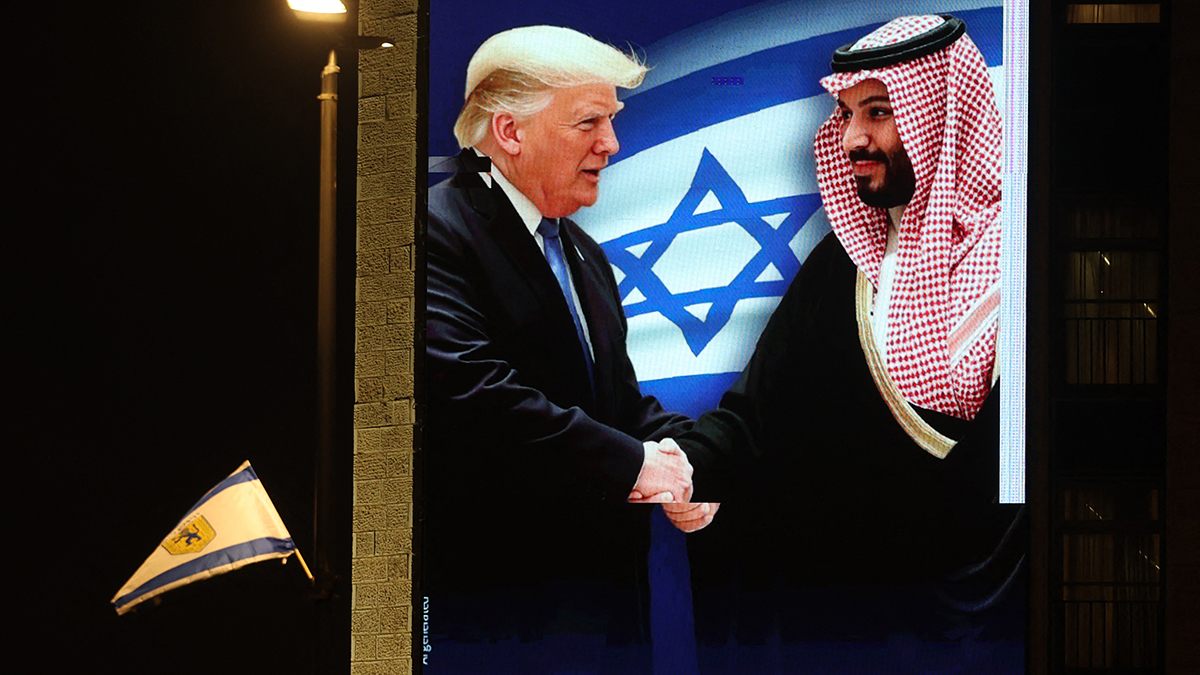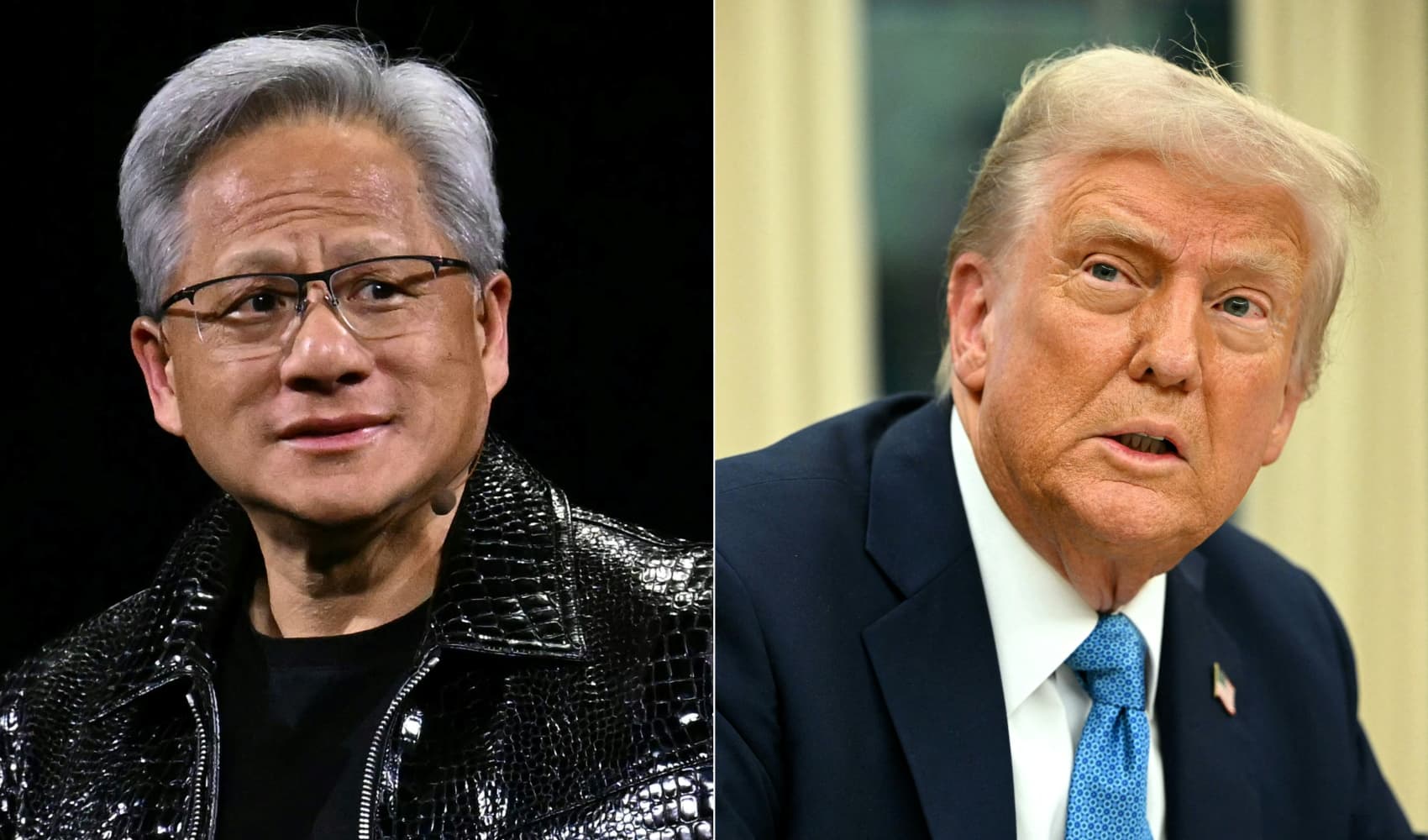Trump's Global Week: Trade Truce & First Trip Abroad!
Trump's Global Gambit: Trade Truce, Hostage Release, and a Pivotal First Trip
Introduction: A Whirlwind Week on the World Stage
What a week! It feels like a plot straight out of a political thriller. From a potential trade war averted with China to a hostage homecoming and President Trump embarking on his first major overseas trip in his second term, the world stage is certainly set for high drama. Get ready to unpack these monumental events.
US-China Trade War: Ceasefire on the Horizon?
The Tariff Truce: A Breath of Fresh Air
Remember the escalating trade tensions between the US and China? It felt like we were hurtling towards a full-blown trade war. Well, hold onto your hats! The U.S. and China have agreed to a significant pause in reciprocal tariffs. This is a big deal! Think of it as pressing the pause button on a potential economic disaster. Both sides seem to recognize the mutual benefit of avoiding further escalation.
What Does This Mean for You?
So, what does this tariff truce actually mean for everyday folks? Well, potentially lower prices on imported goods. Imagine your favorite gadgets, clothes, and electronics getting a bit cheaper. Sounds good, right? But remember, this is just a pause. Negotiations are still ongoing, and the future of trade relations remains uncertain. It's like navigating a maze; we've taken one step forward, but there are still plenty of twists and turns ahead.
The Long Road Ahead: Challenges and Opportunities
While the pause in tariffs is encouraging, it's important to remember that deep-seated issues still need to be resolved. Issues around intellectual property rights, market access, and fair trade practices remain sticking points. This is not the end, but just the beginning of a long and complex negotiation process. Think of it as a marathon, not a sprint.
Hostage Homecoming: A Ray of Hope
An American-Israeli Soldier Freed: A Moment of Relief
In a world often filled with conflict and tragedy, there are moments of genuine hope and joy. An American-Israeli soldier, held hostage for over 19 months in the Gaza Strip, has been released by Hamas. Can you imagine the relief and elation of their family and friends? This is a powerful reminder of the human cost of conflict and the importance of diplomatic efforts to secure the release of hostages.
The Diplomatic Dance: Behind the Scenes
Securing the release of a hostage is never easy. It involves complex negotiations, back-channel communications, and a delicate balancing act of diplomacy. While the details of the negotiations are often kept secret, it's clear that significant efforts were made to bring this soldier home. It’s like a carefully orchestrated dance, where one wrong step could jeopardize the entire operation.
Looking Forward: Healing and Recovery
Now that the soldier is free, the focus shifts to their healing and recovery. After enduring such a traumatic experience, they will need time, support, and specialized care to readjust to life outside captivity. Let's hope this marks a new chapter for them, filled with peace and happiness.
Trump's Inaugural Overseas Trip: A Balancing Act
Destination: The Middle East
President Trump has embarked on his first major foreign trip of his second term, with the Middle East as the destination. This is a strategically important region, fraught with challenges and opportunities. Trump will visit Saudi Arabia, Qatar, and the United Arab Emirates. This trip is crucial for strengthening alliances and addressing pressing regional issues.
Navigating Regional Tensions: Israel and Iran
While Trump will visit Saudi Arabia, Qatar, and the UAE, his most pressing regional challenges concern two other countries: Israel and Iran. The Israeli-Palestinian conflict remains a major source of instability, and tensions with Iran over its nuclear program continue to simmer. It's like walking a tightrope over a volcano, where careful diplomacy is essential to avoid disaster.
Strengthening Alliances: Building Bridges
One of the key objectives of Trump's trip is to strengthen alliances with key regional partners. Saudi Arabia, Qatar, and the UAE are important allies in the fight against terrorism and in promoting regional stability. By fostering closer ties, the US hopes to create a more unified front against common threats. It's like building a strong fortress, where each brick represents a valuable partnership.
Trump's Agenda: Key Priorities
So, what's on Trump's agenda for this trip? Expect discussions on counterterrorism, regional security, and economic cooperation. The US is keen to maintain its influence in the region and to ensure that its interests are protected. This trip is a critical opportunity for Trump to assert American leadership on the world stage. It's like a chess game, where every move is carefully calculated.
Executive Action on Prescription Drug Prices
Lowering Drug Costs: A Promise Fulfilled?
Back on the home front, President Trump signed an executive order aimed at lowering prescription drug prices. High drug costs are a major concern for many Americans, and this executive order seeks to address this issue. Trump discussed the measure at a press conference with Health and Human Services Secretary Robert F. Kennedy Jr.
The Details: What Does the Executive Order Do?
What exactly does this executive order do? While the specific details are still emerging, it's expected to focus on increasing competition in the pharmaceutical industry, promoting transparency in drug pricing, and reducing the cost of prescription drugs for consumers. It’s like shining a light into a dark corner, revealing the hidden costs and practices that drive up prices.
Potential Impact: Will It Work?
Will this executive order actually lower prescription drug prices? That remains to be seen. The pharmaceutical industry is a powerful lobby, and it's likely to resist any measures that threaten its profits. However, the executive order could provide a framework for future legislative action and could help to create a more affordable healthcare system. It’s like planting a seed; it may take time to grow, but it has the potential to yield significant results.
The Week Ahead: Looking to the Future
Monitoring Trade Negotiations: Staying Vigilant
As the US and China continue their trade negotiations, it's important to stay informed and to monitor developments closely. The outcome of these negotiations will have a significant impact on the global economy. It’s like watching a slow-motion train wreck; you hope it can be averted, but you need to be prepared for the potential consequences.
Following Trump's Middle East Trip: Assessing the Impact
Keep an eye on Trump's Middle East trip and assess the impact of his meetings and discussions. Will he be able to forge stronger alliances and to de-escalate regional tensions? Only time will tell. It’s like reading a mystery novel; you’re eager to find out what happens next.
The Road Ahead: Challenges and Opportunities
This week has been a whirlwind of activity, with major developments on the trade front, a hostage release, and a pivotal foreign trip. As we move forward, it's important to remain vigilant, informed, and engaged. The world is constantly changing, and we need to be prepared to adapt to new challenges and opportunities. It's like navigating a turbulent sea; you need to stay focused, adaptable, and resilient.
Conclusion: Navigating a Complex World
This week's events highlight the complexities and challenges of navigating the modern world. From trade wars to hostage crises and diplomatic missions, the stakes are high. The pause in tariffs, the hostage release, and Trump's Middle East trip are all significant developments. As we move forward, it's crucial to stay informed and engaged, and to work towards a more peaceful and prosperous future. So, buckle up, because the ride is far from over!
Frequently Asked Questions
- What are the main issues still unresolved in the US-China trade dispute?
Beyond tariffs, key issues include intellectual property theft, forced technology transfer, and market access restrictions.
- What kind of support will the released hostage receive?
The individual will likely receive extensive medical, psychological, and social support to aid in their reintegration into society.
- What are the primary goals of Trump's visit to Saudi Arabia?
The goals include strengthening security cooperation, promoting regional stability, and discussing energy policies.
- How will the executive order on drug prices impact consumers immediately?
The immediate impact might be limited, but it could pave the way for future legislative changes that lower drug costs.
- Why is the Middle East such a strategically important region for the US?
The Middle East is vital due to its energy resources, strategic location, and the presence of key allies and adversaries.



